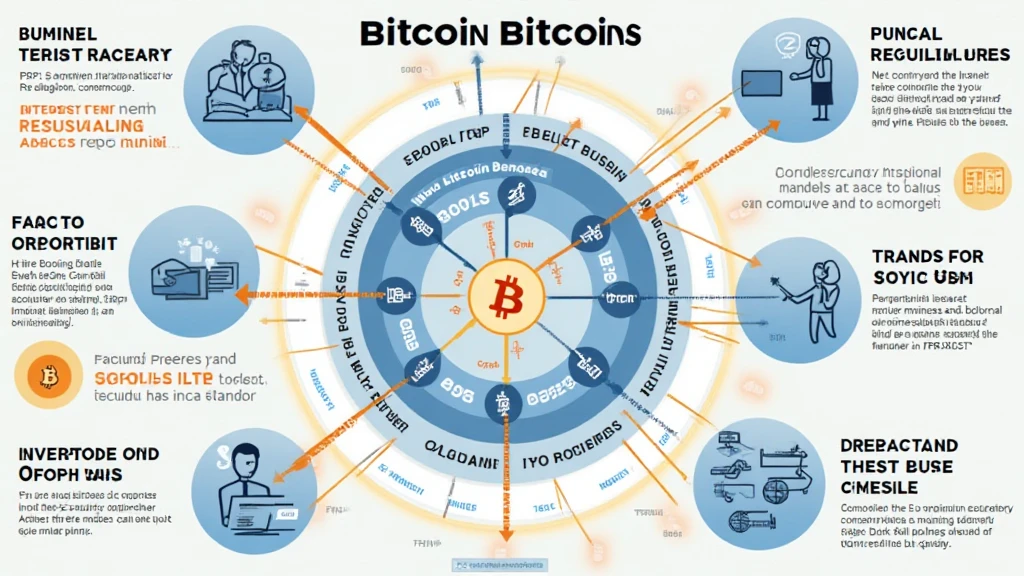Introduction
Bitcoin has continued to dominate the cryptocurrency market, captivating investors and economic analysts alike. With a market cap that has fluctuated between $500 billion and $1 trillion in recent years, Bitcoin remains a focal point in discussions about cryptocurrencies. As of 2024, it’s reported that approximately $4.1 billion was lost to DeFi hacks, which raises questions about the underlying market drivers influencing Bitcoin’s resilience and growth.
In this article, we will break down the core market drivers of Bitcoin, providing insights backed by credible data. Our analysis will focus on essential factors including regulatory developments, market liquidity, technological advances, and macroeconomic indicators. With insights relevant to both seasoned investors and newcomers to the crypto space, this analysis will arm you with the knowledge needed to navigate the complex Bitcoin landscape.
Understanding Market Drivers
Market drivers can be broadly classified into various categories. These categories typically include:

- Regulatory Influences: How government policies affect market sentiment and legitimacy.
- Technological Developments: Innovations that influence Bitcoin’s utility and adoption.
- Investor Behavior: Insights into how trading patterns impact Bitcoin’s price.
- Macroeconomic Trends: External economic factors that sway market dynamics.
Regulatory Influences: A Double-Edged Sword
Regulatory developments can act as both catalysts for growth and barriers to entry in the Bitcoin market.
For instance, two major events shaped the market sentiments in 2023:
- The United States’ regulatory clarity helped to legitimize Bitcoin as a financial instrument, drawing in institutional investors.
- Conversely, tighter restrictions in regions such as China sent shockwaves through the market, leading to a significant decrease in Bitcoin’s value.
According to a recent report by CoinDesk, the uncertainty in regulations has led to a notable shift in where Bitcoin investments are concentrated. Countries like Vietnam, where crypto adoption rates surged by over 60% last year, are seeing investors gravitate toward cryptocurrencies as innovative alternatives to traditional financial systems. This represents a crucial shift we cannot overlook.
Technological Developments: The Backbone of Bitcoin’s Evolution
The evolution of Bitcoin’s underlying technology plays a critical role in its long-term sustainability. Innovations such as the Lightning Network have enhanced transaction speed and reduced costs, which promote Bitcoin’s feasibility for everyday use.
Moreover, advancements in blockchain interoperability—such as the capability to integrate with various DeFi platforms—have expanded Bitcoin’s use cases. It’s important to note that, as of 2024, approximately 30% of Bitcoin transactions involve other cryptocurrency interactions, indicating a significant shift in the Bitcoin ecosystem.
Investor Behavior: Analyzing Market Sentiment
Investor psychology drastically impacts Bitcoin’s price volatility. Studies suggest that Bitcoin often behaves as a market leader, where significant price movements can create a ripple effect across altcoins and other digital assets.
During the bull market phases, a phenomenon commonly referred to as “FOMO” (Fear of Missing Out) drives new investors into the market, pushing prices even higher. However, this short-term exuberance can lead to steep corrections, as seen in 2022 when Bitcoin fell from a staggering $69,000 peak to around $30,000 within months. Understanding these cycles is paramount for any investor attempting to navigate the crypto landscape effectively.
Macroeconomic Trends: The Bigger Picture
Global economic conditions significantly affect cryptocurrency markets. For instance, during economic downturns when traditional markets falter, Bitcoin has often been deemed a “safe haven” asset.
In late 2023, Bitcoin’s price surged by nearly 40% in response to geopolitical tensions that negatively impacted stock markets. Similarly, central banks’ policies—such as interest rate adjustments—play an essential role in determining the liquidity available for Bitcoin investments.
Overall, understanding these macroeconomic indicators can help in forecasting Bitcoin price movements and strategically planning investitures.
The Vietnamese Market and Bitcoin Adoption
Vietnam has rapidly emerged as a fertile ground for Bitcoin and cryptocurrency projects. With a reported growth rate of over 60% in user adoption from 2022 to 2023, it signals a bright future for digital assets in the region.
Moreover, the Vietnamese government has shown interest in exploring blockchain technology, which offers transparency and security—qualities that can enhance local businesses. The growing number of blockchain initiatives in the country suggests that Bitcoin will continue to garner interest, providing more room for price appreciation among local investors.
The Role of Local Exchanges and Education
The rise of local exchanges in Vietnam has been pivotal. With trustable platforms such as Binance offering Vietnamese language support, the accessibility for new investors has improved significantly.
Furthermore, community-driven educational efforts geared toward demystifying blockchain technology—referred to locally as “tiêu chuẩn an ninh blockchain”—are influencing the adoption curve positively. As knowledge spreads, we are likely to see a correspondingly enhanced investment environment.
Conclusion
In summary, the analysis of Bitcoin market drivers reveals much about the crypto landscape today. Regulatory influences, technological advancements, investor behavior, and macroeconomic trends work in tandem to shape Bitcoin’s price dynamics. The continued growth in markets such as Vietnam signals a considerable transition in how Bitcoin is perceived and utilized both regionally and globally. As we look ahead to 2025, the landscape promises both challenges and opportunities for cryptocurrency stakeholders.
As a potential investor or a technological enthusiast, understanding these drivers equips you with the information needed to navigate the cryptocurrency market effectively. Interested readers can explore similar topics such as our guide on cryptocurrency taxes in Vietnam or insights about other emerging cryptocurrency trends around the globe.
Author: Dr. Tran Minh Hoang, a recognized expert in blockchain technology with more than 15 publications on decentralized finance and related auditing projects.




